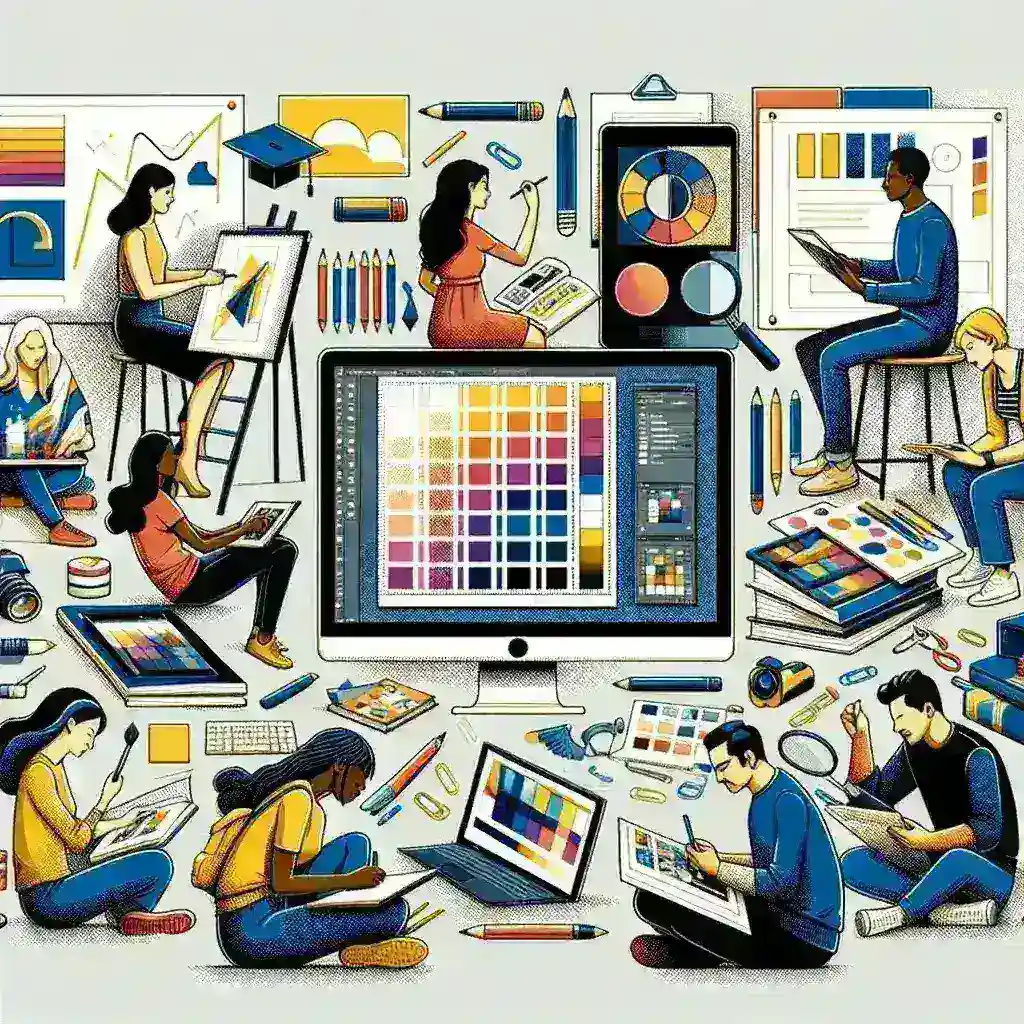Getting Started with Graphic Design Learning Resources
Whether you’re an aspiring designer or a seasoned professional looking to expand your skillset, finding the right resources for learning graphic design is crucial for your success. This comprehensive guide will walk you through the best available resources to help you master the art of graphic design.
Online Learning Platforms
The digital age has made learning graphic design more accessible than ever. Here are some of the most valuable platforms for developing your skills:
- LinkedIn Learning (formerly Lynda.com) – Offers comprehensive courses covering everything from design basics to advanced techniques
- Skillshare – Features practical projects and workshops led by industry professionals
- Udemy – Provides affordable courses with lifetime access to learning materials
- Coursera – Partners with top universities to deliver high-quality design education
Essential Design Software and Tools
Mastering the right tools is fundamental to becoming a successful graphic designer. Here are the must-learn software applications:
- Adobe Creative Suite – Including Photoshop, Illustrator, and InDesign
- Figma – Popular for UI/UX design and collaborative projects
- Canva – Perfect for beginners and quick design projects
- Sketch – Widely used in the digital design industry
Free Educational Resources
For those on a budget, there are numerous free resources available to learn graphic design:
- YouTube Tutorials – Countless channels dedicated to design education
- Design Blogs – Regular updates on trends and techniques
- Open Source Design Tools – Free alternatives to premium software
- Design Communities – Forums and social media groups for learning and sharing
Design Books and Publications
Traditional learning resources remain valuable for developing a strong foundation in design principles:
- Design Theory Books – Essential reading for understanding fundamentals
- Industry Magazines – Stay updated with current trends and innovations
- Case Study Collections – Learn from real-world design examples
- Typography Guides – Master the art of working with text and fonts
Practice Resources and Design Challenges
Practical application is crucial for developing your design skills:
- Daily Design Challenges – Regular exercises to improve creativity
- Mock Projects – Create portfolio pieces while learning
- Design Competitions – Test your skills against others
- Personal Projects – Apply learned concepts to real-world scenarios
Professional Development Resources
Take your design career to the next level with these professional resources:
- Design Certifications – Gain credentials recognized by the industry
- Portfolio Platforms – Showcase your work professionally
- Networking Events – Connect with other designers and potential clients
- Industry Conferences – Learn from leading design experts
Design Communities and Feedback
Engage with fellow designers to grow and improve:
- Online Design Forums – Share work and get feedback
- Social Media Groups – Connect with other designers
- Local Design Meetups – Network with designers in your area
- Mentorship Programs – Learn from experienced professionals
Specialized Design Resources
Focus on specific areas of graphic design with specialized resources:
- Brand Design Resources – Learn about creating cohesive brand identities
- Web Design Tools – Master digital design principles
- Print Design Guidelines – Understand print production requirements
- Motion Design Resources – Explore animated graphics
Tips for Making the Most of Learning Resources
Maximize your learning experience with these strategies:
- Create a Learning Schedule – Set aside dedicated time for learning
- Track Your Progress – Document your improvement over time
- Build a Resource Library – Organize your learning materials
- Join Study Groups – Collaborate with other learners
Conclusion
The journey to becoming a skilled graphic designer is ongoing, and having access to the right resources is essential. Whether you’re just starting or looking to advance your career, these resources provide the foundation you need to succeed in the field of graphic design. Remember to stay consistent with your learning, practice regularly, and engage with the design community to maximize your growth potential.

Leave a Reply